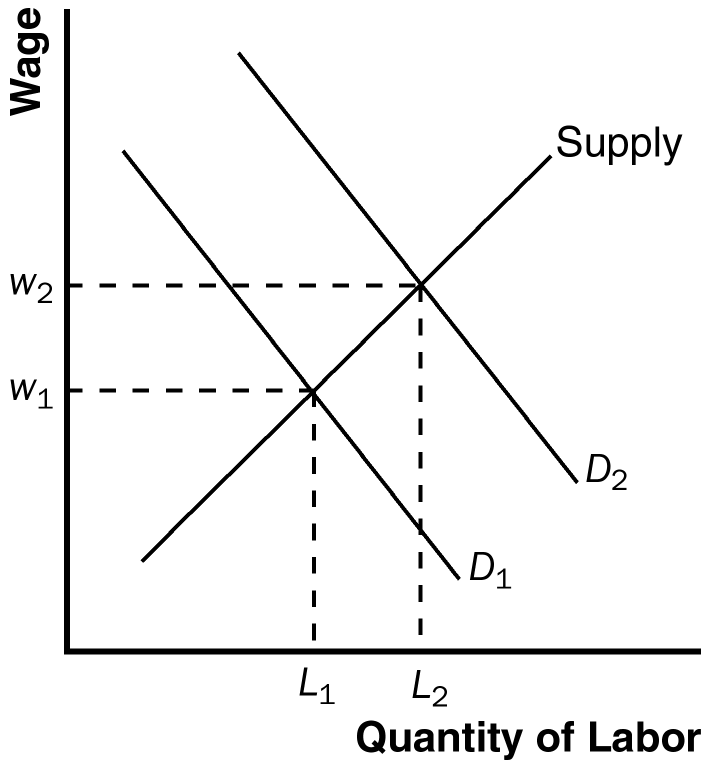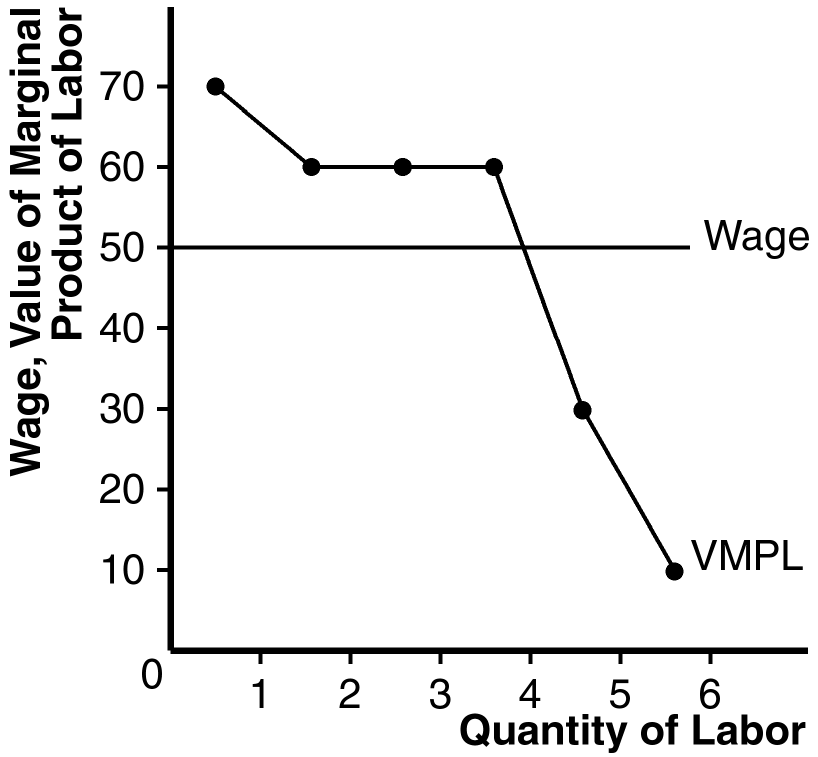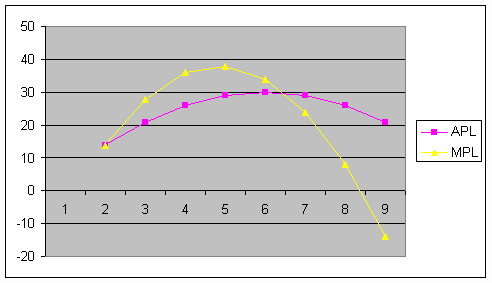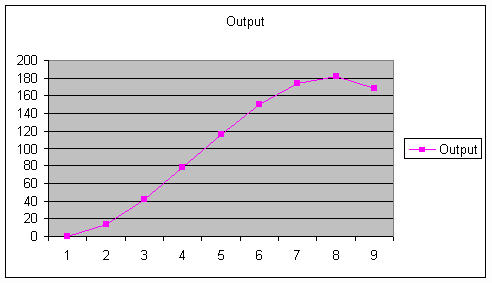
1. Henry Ford made the statement that "It is not the employer who pays wages¾ he only handles the money. It is the product that pays wages." In the language of economics, he means that the demand for labor is a derived demand. Wages depend on the price of the final product (which is determined by the demand for the product) and the productivity of workers. It is based on the marginal revenue product or the additional revenue from selling the additional product produced by the last worker.

Figure 1
2. a. If Congress were to buy personal computers for all American college students, the demand for computers would increase, raising the price of computers and thus increasing the value of marginal product of workers who produce computers. This is shown in Figure 1 as a shift in the demand curve for labor from D1 to D2. The result is an increase in the wage from w1 to w2 and an increase in the quantity of labor from L1 to L2.
b. If more college students major in engineering and computer science, the supply of labor in the computer industry rises. This is shown in Figure 2 as a shift in the supply curve from S1 to S2. The result is a decrease in the wage from w1 to w2 and an increase in the quantity of labor from L1 to L2.
Figure 2

Figure 3
If computer firms build new manufacturing plants, this increases the marginal product of labor and the value of the marginal product of labor for any given quantity of labor. This is shown in Figure 3 as a shift in the demand curve for labor from D1 to D2. The result is an increase in the wage from w1 to w2 and an increase in the quantity of labor from L1 to L2.Since your uncle is maximizing his profit, he must be hiring workers such that their wage equals the value of their marginal product. Since the wage is $6 per hour, their value of marginal product must be $6 per hour. Since the value of marginal product equals the marginal product times the price of the good, and since the price of a sandwich is $3, the marginal product of a worker must be 2 sandwiches per hour.
3. In equilibrium, the Marginal Revenue Product (value of the marginal product) is equal to the wage. Since he is maximizing profit, we must be maximizing profit and the value must equal the wage. $6
4. The following table shows the marginal product of labor and the value of the marginal product of labor:
|
L |
Q |
MPL |
VMPL |
|
0 |
0 |
--- |
--- |
|
1 |
7 |
7 |
70 |
|
2 |
13 |
6 |
60 |
|
3 |
19 |
6 |
60 |
|
4 |
25 |
6 |
60 |
|
5 |
28 |
3 |
30 |
|
6 |
29 |
1 |
10 |

Figure 4
Figure 4 plots the firm's demand for labor. Since the wage is $50 per day, the firm should hire four days of labor. For each of the first four days of labor, the value of the marginal product of labor exceeds the wage. But for more than four days of labor, the value of the marginal product is less than the wage. So the firm maximizes profit by hiring four days of labor.
5. a. A decrease in the quantity demanded.
You should be able to graph these! I would, but it takes too long on the web.
6. a. False. It begins where the total product changes to a concave function.
7.
|
Labor |
Output |
MPL |
Price |
MRP (or VMPL) |
|
0 |
0 |
-- |
2 |
|
|
1 |
14 |
14 |
2 |
28 |
|
2 |
42 |
28 |
2 |
56 |
|
3 |
78 |
36 |
2 |
72 |
|
4 |
116 |
38 |
2 |
76 |
|
5 |
150 |
34 |
2 |
68 |
|
6 |
174 |
24 |
2 |
48 |
|
7 |
182 |
8 |
2 |
16 |
|
8 |
168 |
-14 |
2 |
-28 |


8 and 9. We did this in class. If you have any question, stop by office hours.